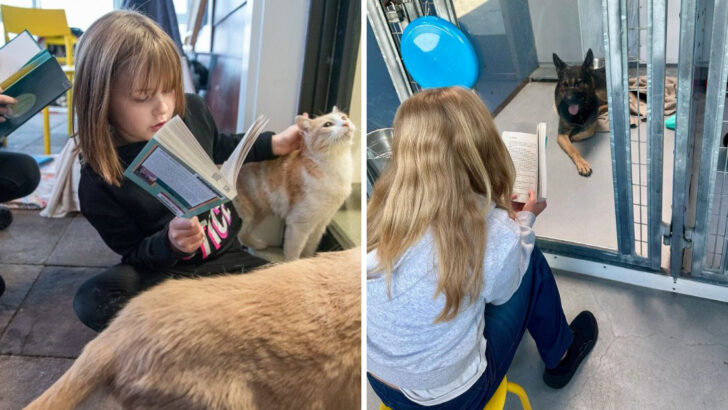Some animals lose everything before they ever learn what love feels like. Shelter life can be loud, cold, and confusing—especially for pets that once had homes. But something extraordinary is happening behind those kennel doors. Volunteers are grabbing blankets, books, and soft voices—and changing lives one cuddle at a time. From whispered stories to gentle snuggles, this quiet revolution is helping frightened animals find peace, trust, and even a little joy again. These small acts aren’t just heartwarming—they’re healing. And for many dogs and cats, it’s the first step toward a forever home.
The Calming Effect of Human Voices

A gentle voice can weave wonders. In shelters, volunteers take turns reading to animals, creating a calming environment. The rhythm of a human voice helps soothe anxiety in dogs and cats. It’s a simple yet powerful way to help animals feel relaxed.
Animals listen intently, comforted by the familiar tones. Many volunteers report seeing animals visibly unwind, their apprehension melting away. This unique bond strengthens the trust between humans and animals, paving the way for potential adoptions.
Did you know? Regular reading to animals has shown an increase in their social behavior, making them more approachable.
Cuddles with Canines
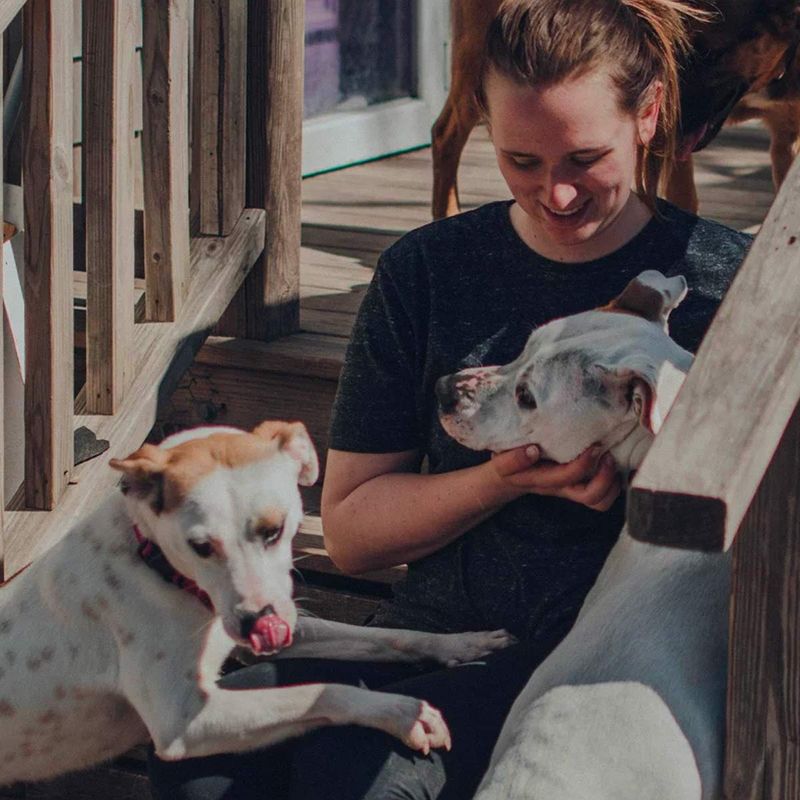
With wagging tails and warm snuggles, dogs are the heart of any shelter. Volunteers and staff engage in daily cuddle sessions with the canine residents. These interactions provide comfort and love that many dogs crave.
Cuddling helps reduce stress levels in both the animals and the humans. Dogs, often abandoned or mistreated, find solace in these simple acts. This nurturing behavior builds resilience and helps them recover emotionally.
Fun fact: Studies indicate that petting a dog can reduce stress-related hormones in humans, fostering a mutual healing process.
The Magic of Story Time for Cats
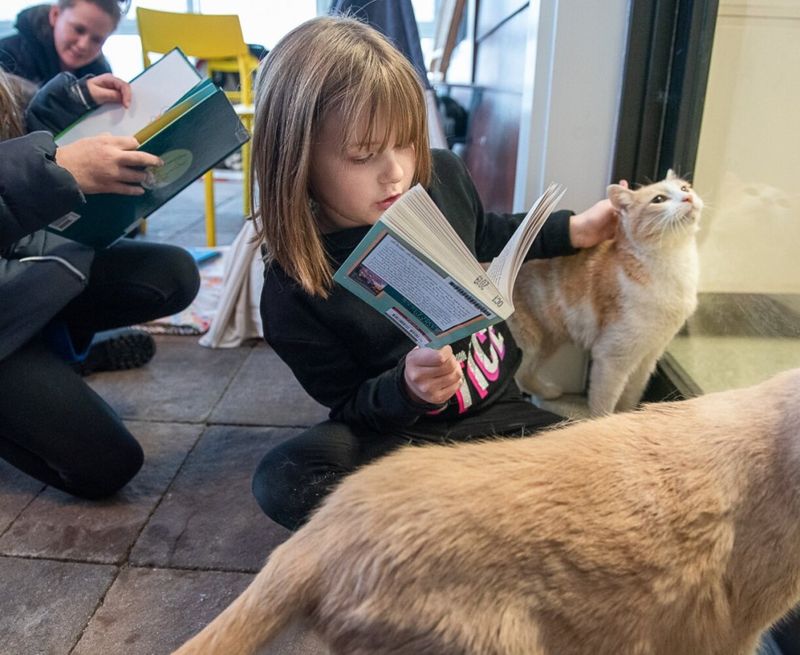
Story time isn’t just for children. In shelters, cats gather around as volunteers read stories, captivated by the soothing voices. These sessions are more than just entertainment; they are therapeutic.
Cats purr and relax as they listen, easing their tension and creating a peaceful environment. Volunteers have shared stories of shy cats coming out of their shells during these sessions. It’s a magical transformation that highlights the power of storytelling.
Curious fact: Cats recognize their names when read aloud, engaging more with the reader and enhancing the bonding experience.
Therapeutic Touch for Nervous Animals
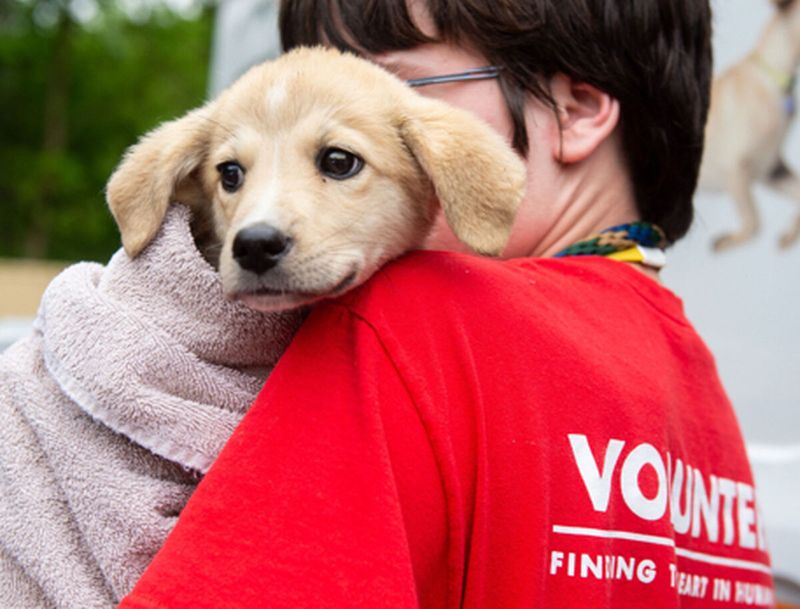
The healing power of touch is immense. In shelters, nervous animals experience therapeutic massages that help them relax. Gentle strokes and massages calm the jittery nerves of anxious animals.
These sessions are vital for animals that have faced trauma. Volunteers are trained to provide this soothing experience, which fosters trust and healing. Touch therapy is a bridge to emotional recovery, helping animals open up.
Did you know? Touch therapy has been credited with reducing recovery time from stress-related illness in animals, making them more adoptable.
Puppy Play Dates and Socialization

Play dates aren’t just for kids. In shelters, organized play sessions allow puppies to socialize. These interactions promote healthy development and behavioral improvement.
Puppies learn social cues, essential for their future lives in forever homes. It’s a delightful sight, watching them frolic with joy. Staff and volunteers oversee these sessions, ensuring safety and fun.
Interesting tidbit: Puppies engaged in regular play dates demonstrate significantly improved social skills, making them more attractive to potential adopters.
The Role of Familiar Scents
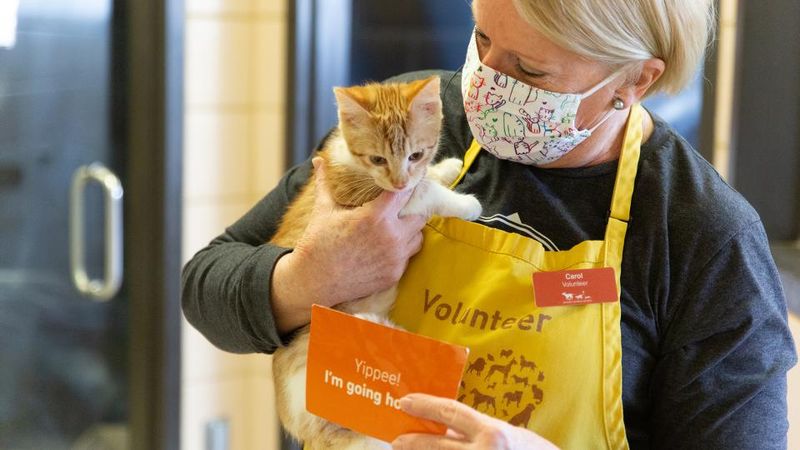
Smells can evoke powerful memories. In shelters, introducing familiar scents helps animals feel secure. Blankets or toys from previous homes are used to comfort dogs and cats.
These familiar scents reduce stress, creating a sense of safety. It’s a gentle reminder of home for animals in transition. Volunteers ensure that these items are available, facilitating faster adaptation and emotional stability.
Surprising fact: Familiar scents have been found to lower heart rates in anxious animals, aiding in their overall wellbeing and adoptability.
Artistic Activities for Expression
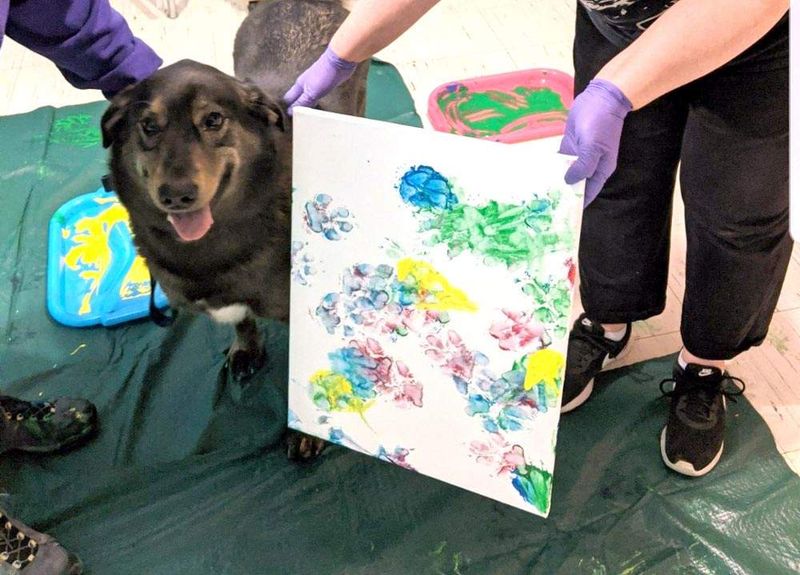
Art has the power to heal. In shelters, creative activities like painting help animals express themselves. Participants, both human and animal, engage in these sessions for emotional release.
Dogs and cats are encouraged to participate in paw painting, creating beautiful pieces. These activities provide an outlet for energy and creativity, fostering a sense of accomplishment and joy.
Fun insight: Art therapy has been linked to increased happiness and lower stress levels in participating animals, making them more appealing to potential adopters.

